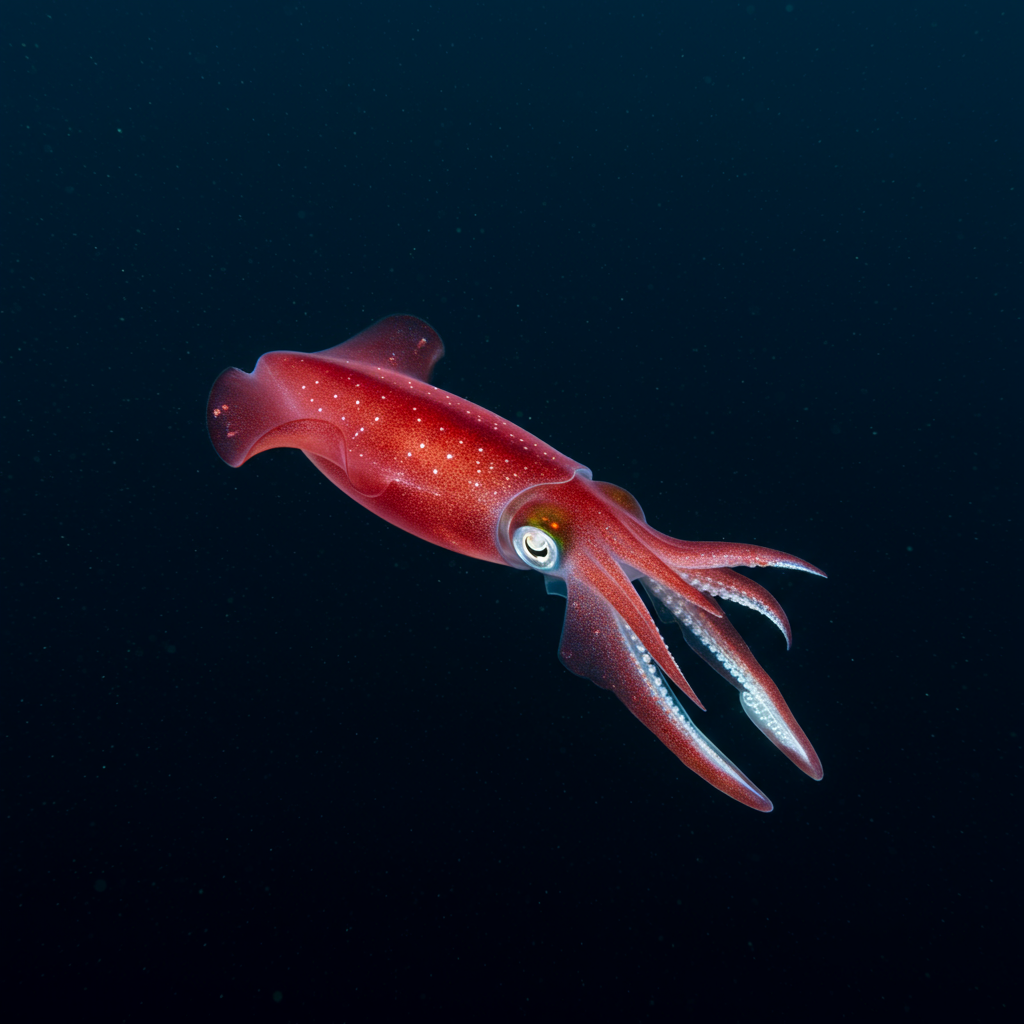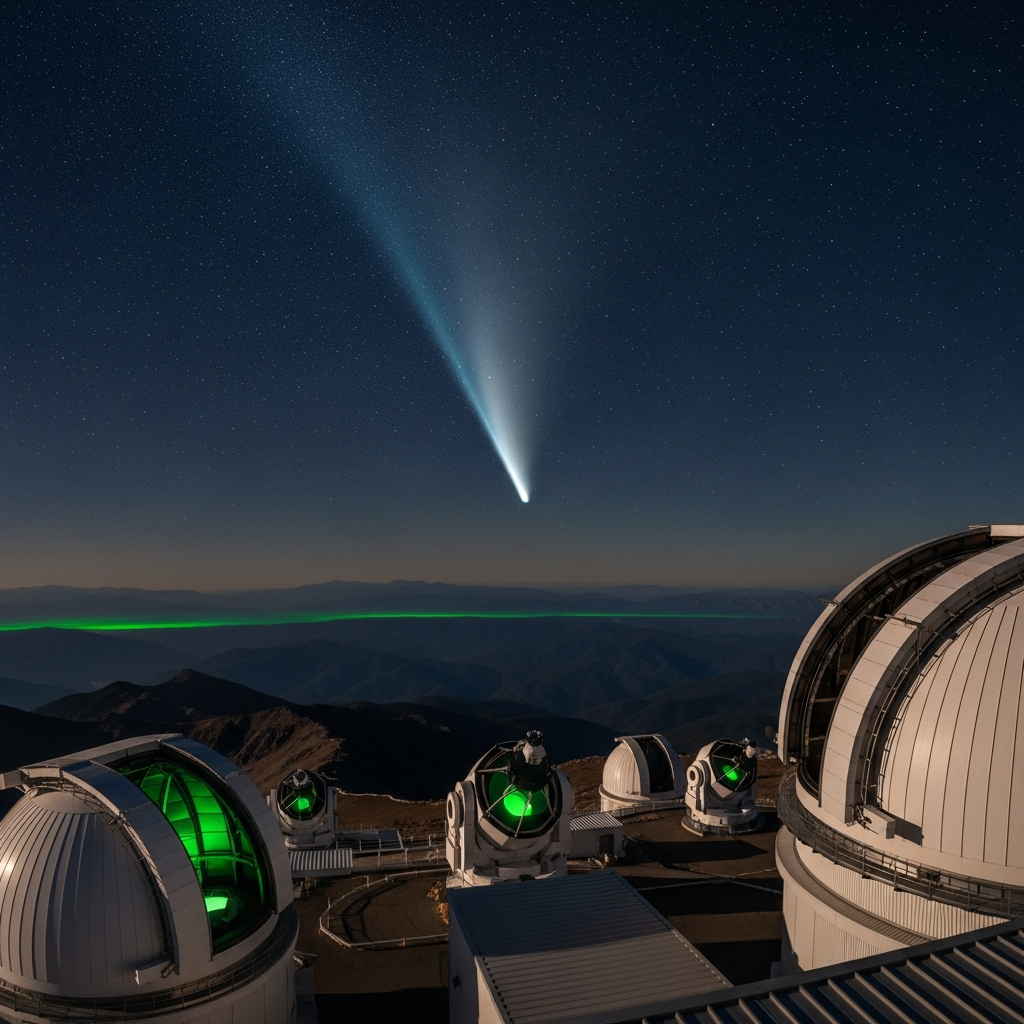Historic First Footage: Antarctic Gonate Squid Captured Alive in the Abyss
For over a century, the Antarctic Gonate squid ( Gonatus antarcticus) has remained one of the ocean’s most elusive mysteries. Known only through deceased specimens found in nets or the stomachs of predators, glimpsing this creature alive in its natural habitat was the stuff of deep-sea dreams. Until now.
In a landmark moment for ocean exploration, researchers have captured the first-ever live footage of a blood-red Antarctic Gonate squid navigating the pitch-black expanse of the ocean’s midnight zone. This unprecedented encounter provides invaluable insights into the life and behavior of this rarely seen cephalopod in the extreme environment of the Antarctic deep.
Discovery in the Deep: Where and How
The historic sighting occurred on December 25, 2024, deep within the Antarctic Ocean. A remotely operated vehicle (ROV SuBastian), deployed from the Schmidt Ocean Institute’s research vessel (R/V Falkor), recorded the squid drifting serenely at a staggering depth of 7,060 feet (2,152 meters) below the surface.
This mission, a collaboration between the National Geographic Society and Rolex Perpetual Planet Ocean Expeditions, faced its own challenges, including navigating dangerous shifting ice blocks that required the team to relocate. Despite the difficulties, the expedition yielded this remarkable breakthrough.
Encountering the Blood-Red Hunter
The squid filmed was estimated to be around three feet (0.9 meters) long and possessed a striking, haunting blood-red coloration. Its appearance alone sets it apart in the inky darkness where bioluminescence often provides the only light.
A key feature visible in the footage was the presence of large, distinctive hooks located at the ends of its long tentacles. These aren’t just for show; according to experts like Alex Hayward, a senior lecturer at the University of Exeter, these hooks are crucial tools for the squid’s ambush predation. They enable it to grasp and subdue prey effectively in the challenging conditions of the deep sea.
Secrets Revealed: Behavior and Survival
Witnessing the squid alive offered glimpses into its natural behavior. As the ROV approached, the squid demonstrated a likely defense mechanism, releasing a cloud of greenish ink before quickly darting away into the darkness. This interaction, though brief, marked the first time scientists have observed this species deploying ink, adding a vital piece to the puzzle of its survival strategies.
The squid’s appearance also hinted at the harsh realities of deep-sea life. Researchers noted what appeared to be battle scars – scratches on its arms and fresh marks on its mantle. As Kat Bolstad, head of the Lab for Cephalopod Ecology and Systematics at Auckland University of Technology, points out, these could indicate a recent, potentially survived, encounter with a predator, highlighting the constant struggle for survival in the abyss.
Unveiling Antarctic’s Hidden World
Identifying the creature was made possible by its distinct features, particularly the large tentacle hooks, confirmed by Dr. Bolstad. “My very favorite thing is when someone sends me a clip and says, ‘who’s this squid?'” she shared, confirming, “This is, to the best of my knowledge, the first live footage of this animal worldwide.”
This unprecedented squid sighting adds to a growing list of remarkable discoveries being made in the Antarctic deep. Recent expeditions, for example, have also revealed several new species of bizarre feather stars, like the alien-like Antarctic strawberry feather star ( Promachocrinus fragarius), with its strawberry-shaped body and numerous arms.
These findings underscore just how much unique biodiversity remains hidden in these frigid, unexplored waters. The first live sighting of the Antarctic Gonate squid serves as a powerful reminder of the vast, mysterious ecosystems that lie beneath the ocean’s surface, waiting to be discovered.




